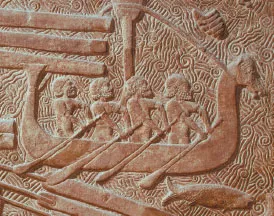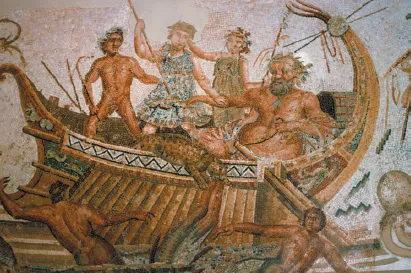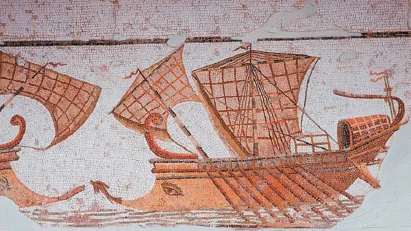eBook - ePub
Pirates
Frequently asked questions
Yes, you can cancel anytime from the Subscription tab in your account settings on the Perlego website. Your subscription will stay active until the end of your current billing period. Learn how to cancel your subscription.
At the moment all of our mobile-responsive ePub books are available to download via the app. Most of our PDFs are also available to download and we're working on making the final remaining ones downloadable now. Learn more here.
Perlego offers two plans: Essential and Complete
- Essential is ideal for learners and professionals who enjoy exploring a wide range of subjects. Access the Essential Library with 800,000+ trusted titles and best-sellers across business, personal growth, and the humanities. Includes unlimited reading time and Standard Read Aloud voice.
- Complete: Perfect for advanced learners and researchers needing full, unrestricted access. Unlock 1.4M+ books across hundreds of subjects, including academic and specialized titles. The Complete Plan also includes advanced features like Premium Read Aloud and Research Assistant.
We are an online textbook subscription service, where you can get access to an entire online library for less than the price of a single book per month. With over 1 million books across 1000+ topics, we’ve got you covered! Learn more here.
Look out for the read-aloud symbol on your next book to see if you can listen to it. The read-aloud tool reads text aloud for you, highlighting the text as it is being read. You can pause it, speed it up and slow it down. Learn more here.
Yes! You can use the Perlego app on both iOS or Android devices to read anytime, anywhere — even offline. Perfect for commutes or when you’re on the go.
Please note we cannot support devices running on iOS 13 and Android 7 or earlier. Learn more about using the app.
Please note we cannot support devices running on iOS 13 and Android 7 or earlier. Learn more about using the app.
Yes, you can access Pirates by David Pickering in PDF and/or ePUB format, as well as other popular books in History & World History. We have over one million books available in our catalogue for you to explore.
Information
PART ONE
Chronology
Pirates have roamed the seas of the world since ancient times. Generations of peaceful seafarers have learned to dread the appearance of pirates, and piracy itself has long been one of the most colourful threads running through maritime history.

Viking longboats
These Scandinavian sea raiders were also intrepid sailors, navigating the Atlantic Ocean and venturing as far afield as the Mediterranean, Greenland and probably even North America in their sleek, square-sailed boats.
PIRACY THROUGH THE AGES
The earliest records of piracy go back thousands of years. Seafarers in the Mediterranean were falling victim to pirates even before the emergence of the ancient Egyptian civilization. Pirates continued to plague the Mycenean, Minoan, Phoenician, Greek and Carthaginian civilizations until they were suppressed by the Romans in the first century BC.
Piracy in the Mediterranean re-emerged during the period of the Byzantine Empire. The waters of northern Europe, meanwhile, were terrorized by Saxon and then Viking warrior-pirates. Maritime trade became busier in the medieval period, and with it came an increase in piracy. Islamic corsairs sailing out of the Barbary coast roamed the Mediterranean, while privateers were employed by various European monarchs.
SWASHBUCKLERS
The treasure ships carrying the wealth of the New World to Spain inspired an explosion in piracy in the so-called Spanish Main in the sixteenth century. This was the era of the swashbuckling privateers, buccaneers and English sea dogs, whose adventures became the stuff of legend.
The ‘Golden Age’ of piracy, however, opened late in the seventeenth century, when pirates such as Blackbeard terrorized the Caribbean and Indian Oceans under the skull-and-crossbones flag, earning fearsome reputations for cruelty and greed. Although most of them were dead within 20 years, they are still remembered in the popular image of the historical pirate, complete with cutlass, eyepatch and chest of buried treasure. The daring of the French corsairs added to the romantic image of pirates, as did the bravado of American privateers like John Paul Jones during the American Revolution and the War of 1812.
PIRATES OF THE FAR EAST
Few pirates were as vicious as those who swarmed the South China Sea and the Indonesian archipelago in the eighteenth and nineteenth centuries. Pirate junks dominated sea lanes, and the power of the pirate chiefs rivalled that of the Chinese emperors themselves.
Piracy today
Piracy was curtailed in the mid-nineteenth century, but has never disappeared completely. Even today reports come in of acts of piracy off Africa and in the South China Sea.
THE SEA PEOPLES
The so-called ‘Sea Peoples’ were a loosely-linked confederation of piratical tribes who dominated the eastern Mediterranean around 1200 BC. Although little is known in detail about them beyond mentions in the hieroglyphics of Egyptian temples, it appears that they were nomadic and came originally from various parts of Asia Minor and elsewhere in the Mediterranean region. They probably included the feared Lukkan sea raiders, who had plagued coastal trade routes in the Mediterranean since the fourteenth century BC, making the trading ships of ancient Egypt a particular target.
LORDS OF THE MEDITERRANEAN
These early pirates used highly manoeuvrable and fast oared galleys and made trade between early civilizations in the Mediterranean a perilous business. No trading vessel sailing in the Mediterranean or in the Persian Gulf was safe from interference.
The Sea Peoples appear to have forged alliances with Egypt’s enemies from time to time and the Egyptians fought pitched battles with them on at least one occasion (off the Nile Delta in 1186 BC). At the height of their power they commanded the whole of the eastern Mediterranean, attacking shipping and conducting coastal raids. Major cities and even entire regions fell under their control. After their defeat by the Egyptians most of the Sea Peoples appear to have settled in Palestine and turned to farming, possibly becoming the ancestors of the Phoenicians.
The influence of the Sea Peoples is thought to have had a significant effect in slowing the development of ancient civilization in the Mediterranean region.


PIRATES OF ANCIENT GREECE
Pirates were a threat to shipping in the eastern Mediterranean throughout the period of the Ancient Greeks. Several Greek city-states, including those of the fourth-century BC Aetolian League, adopted piracy to protect their trade against their neighbours, allowing pirates to establish lairs in their territory. Others built up fleets to suppress the pirates who attacked their ships.


The Aegean Sea, with its numerous islands and inlets, proved ideal for piracy, offering havens where pirates could shelter. Particularly notorious were the Dorian Greek pirates who overwhelmed the Minoans in the tenth century BC and made Crete a pirate base for the next 800 years. Another major pirate lair was Lemnos, from which pirate fleets raided Athens itself.
TREASURES OF THE ANCIENT WORLD
The richest prizes included Phoenician traders carrying silver and precious metals, although pirates also attacked humble fishing boats and conducted coastal raids. Any captives were sold as slaves.
Like pirates of all ages, those of the ancient world used whatever vessels they could obtain, though they preferred fast, shallow-bottomed galleys powered by oars which were easy to manoeuvre and could cross shallow waters where larger vessels could not follow.
Piracy declined with the establishment of large navies by the Greek city-states and the campaigns of Alexander the Great. The pirates of Lemnos were dispersed in the sixth century BC, while those of the islands of Kithnos, Mikonos and the Sporades were suppressed in the following century. A similar fate befell the pirates of Crete in the second century BC.
ROME AND THE PIRATES
Having been suppressed by Alexander the Great and others, the pirates of the Mediterranean enjoyed a revival in fortune with the decline of Macedonia and the outbreak of war between Rome and Carthage in the second century BC. At different times large fleets of pirate ships were employed as mercenaries by one side or the other. Regions such as Dalmatia and Illyria embraced piracy as a means of enriching themselves at the expense of Roman and other shipping. Cilicia (in what is now southern Turkey) and various islands in the western Mediterranean, such as Corfu and Cephalonia, became notorious pirate lairs.


Julius Caesar
As a young man, Julius Caesar was captured by Cicilian pirates while sailing to Rhodes. After five weeks in captivity he was released for a ransom. Caesar later attacked the pirates who had taken him and had them crucified.
The pirates’ fast galleys often had eyes painted on the prow for luck. There w...
Table of contents
- Title Page
- Contents
- Introduction
- Part One: Chronology
- Part Two: Infamous Pirates
- Part Three: The Ships
- Part Four: The Pirate Life
- Part Five: The End of the Pirates
- Part Six: The Legacy of the Pirates
- Keep Reading
- Find Out More
- Glossary
- Index
- Copyright
- About the Publisher
